Silk, as a significant symbol of ancient Chinese civilization, not only embodies the brilliance of Chinese culture but also plays a crucial role in world history. Among the many remarkable achievements in China’s silk craftsmanship, the silk gauze robe unearthed from the Han tombs of Mawangdui in Changsha stands as aextreme lightness and exquisite craftsmanship, dlightest garment in the world.
I. The Silk Gauze Robe: A Feather-Light Textile Miracle
In 1972, the discovery of the silk gauze robe in Tomb No. 1 of Mawangdui, Hunan, stunned the world. This extraordinary piece was made from exceptionally thin plain silk and weighs only 49 grams, lighter than an A4 sheet of paper. With fabric as thin as a cicada’s wings, it has been hailed as “the lightest clothing in the world.”
The term “dan” (襌) in its name refers to a single-layer, sheer, unlined fabric, indicating the robe’s ultra-lightweight construction. Crafted in the cross-collared, right-over-left wrapping style typical of Han Dynasty clothing, it features wide, flowing sleeves and an elegant silhouette, perfectly reflecting the aesthetics of Han attire. This robe was not just a symbol of social status but also an outstanding testament to the peak of Han Dynasty silk technology.
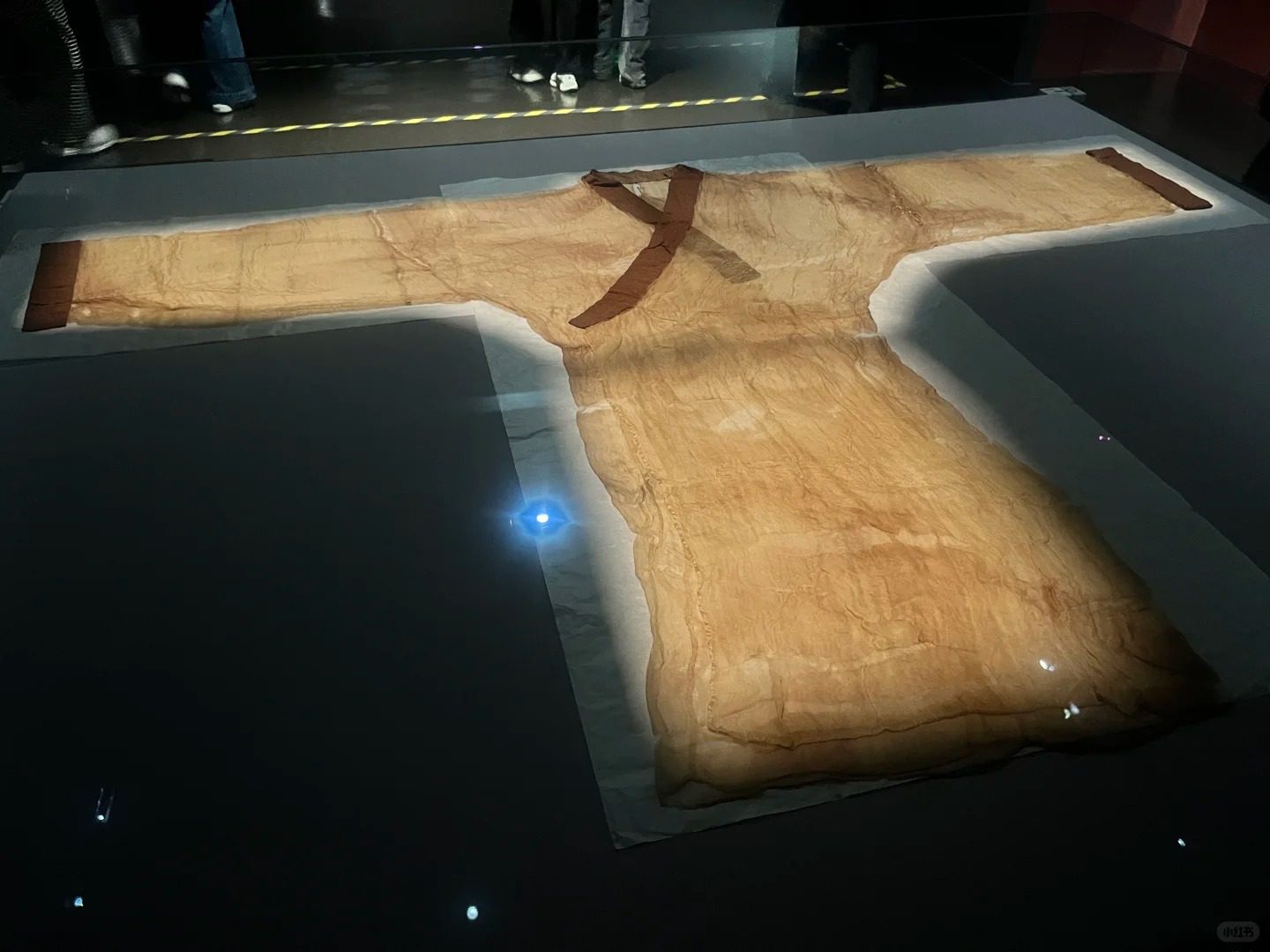
II. The Pinnacle of Han Dynasty Silk Reeling Techniques
1. The Use of Ultra-Fine Silk Threads
The astonishing lightness of the silk gauze robe is attributed to the use of exceptionally fine silk threads. Modern studies show that the threads used in the robe measure only 13–16 deniers (D)—about half the thickness of the finest modern mulberry silk. This demonstrates that Han Dynasty craftsmen had already achieved remarkable proficiency in sericulture (silk farming), reeling, and weaving, enabling them to produce silk threads of such extraordinary fineness and uniformity.
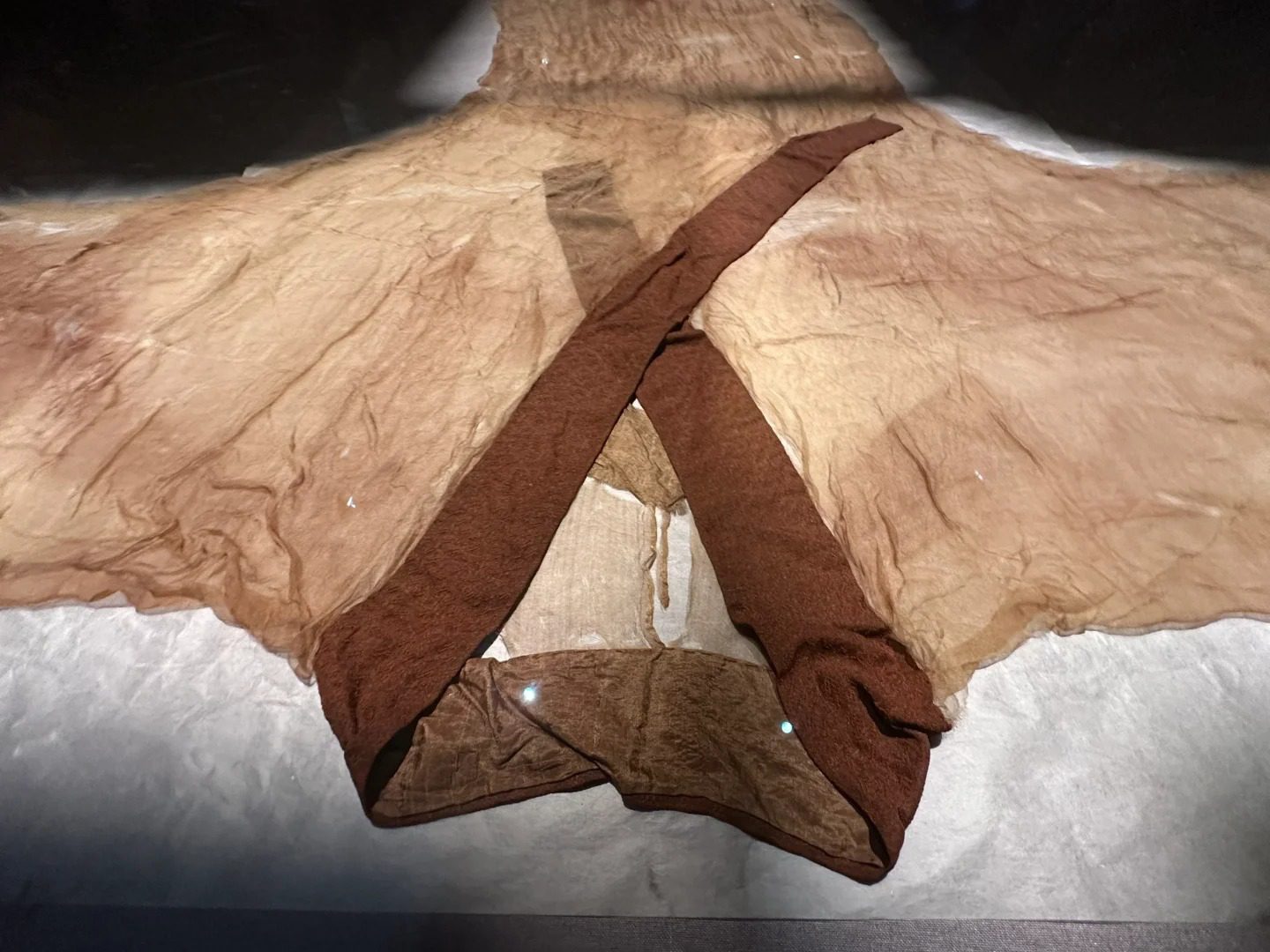
2. Advanced Weaving Techniques
The robe was woven using a plain weave structure, the simplest yet most stable weaving method, ensuring that the fabric remained both lightweight and durable. Archaeological analysis reveals that the fabric’s warp and weft density is only around 20 threads per square centimeter, a remarkable achievement even by today’s textile standards, showcasing the extraordinary skill of Han Dynasty artisans.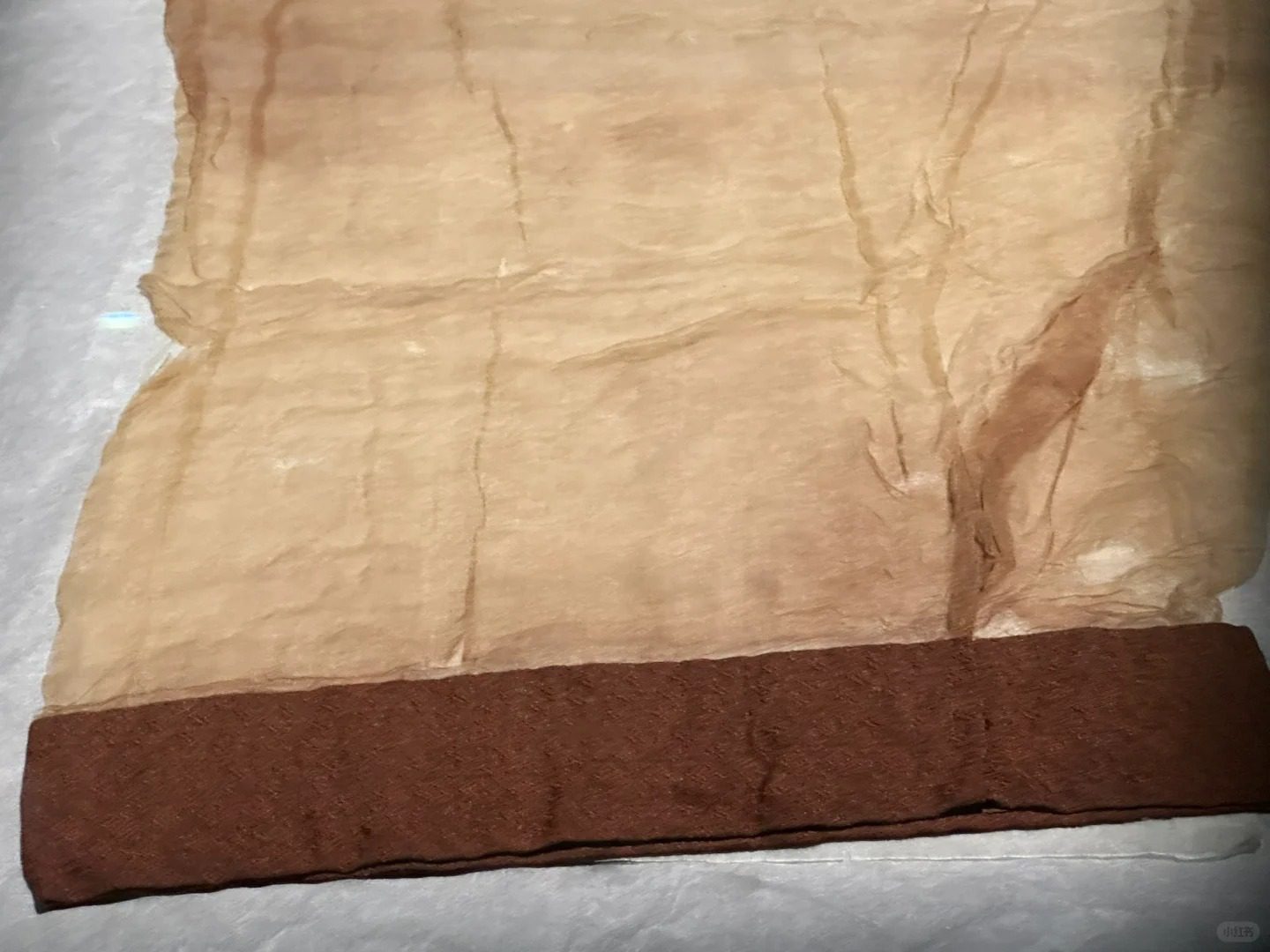
3. Superior Silk Reeling and Finishing Techniques
Silk reeling is the process of extracting silk filaments from cocoons. Han Dynasty craftsmen had already mastered the ability to control the thickness and evenness of the silk threads, ensuring that the woven gauze fabric was both breathable and resistant to breakage. While the silk gauze robe retains its natural silk color, silk production during the Han Dynasty had already developed advanced dyeing and decorative techniques, including brocade weaving and embroidery, which were widely used in other silk garments.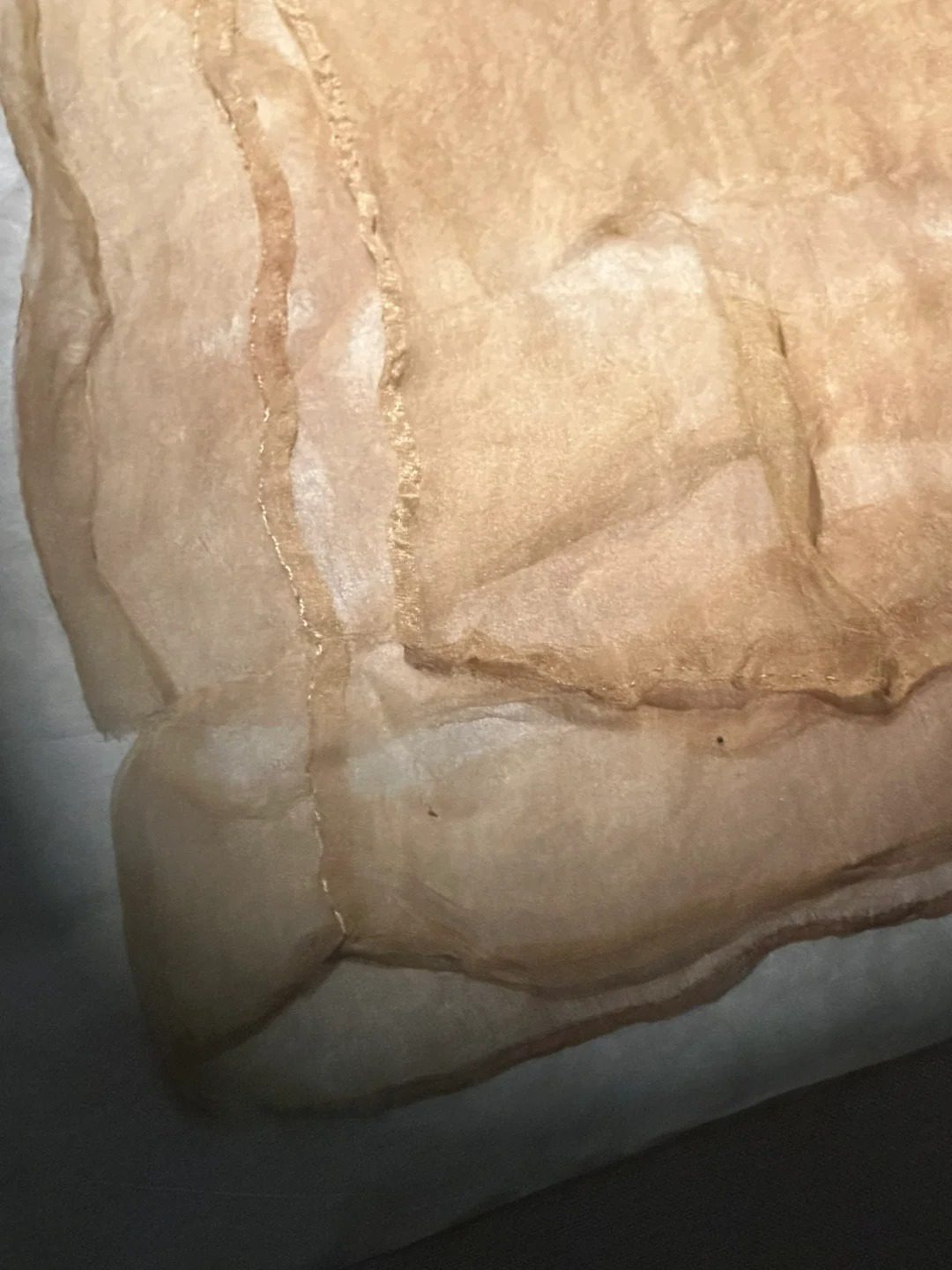
III. The Cultural Significance and Influence of the Silk Gauze Robe
1. A Testament to the Luxury of Han Aristocracy
The silk gauze robe was not an everyday garment for commoners but a luxury reserved for the aristocracy. Archaeologists believe that this robe likely belonged to a high-status noblewoman or was intended as a burial garment for ritual purposes, symbolizing elegance and prestige.
2. A Reflection of the Flourishing Silk Road Trade
The Han Dynasty marked the official establishment of the Silk Road, and the craftsmanship displayed in the silk gauze robe underscores the era’s highly developed silk industry. This excellence in textile production further boosted China’s silk exports, earning Chinese silk a prestigious reputation worldwide.
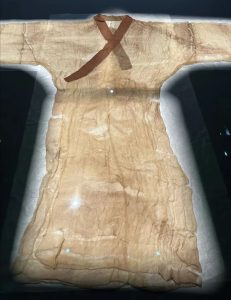
3. Inspiring Modern Textile Research
Even today, the silk gauze robe remains a subject of great interest in textile science and archaeology. Researchers continue to study the techniques used in its creation, attempting to replicate ancient silk weaving methods and uncover the secrets behind this unparalleled textile masterpiece.
Light as a Feather, Timeless in Craftsmanship
The silk gauze robe of Mawangdui is not only a pinnacle of Han Dynasty textile craftsmanship but also a treasured artifact of Chinese culture. Its breathtaking lightness and meticulous artistry continue to amaze the world. Even in an era of advanced modern technology, this silk garment stands as a testament to the ingenuity and dedication of ancient Chinese artisans.
This robe is more than just a piece of clothing—it is a bridge across time, offering a glimpse into the extraordinary achievements of Chinese silk-making that have endured for over two millennia.
What are your thoughts on the world’s lightest garment? Share your insights in the comments below!

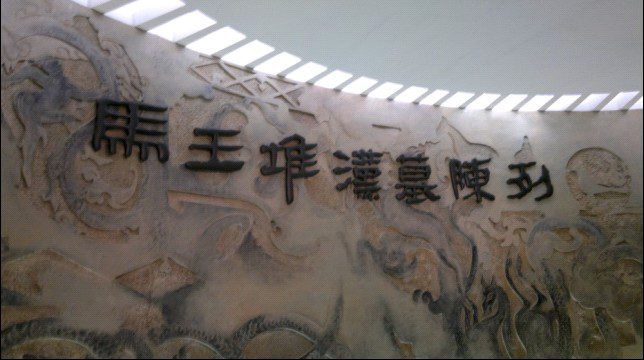


This is so unexpected.
I’d like to see it in person sometime. What museum is it in?